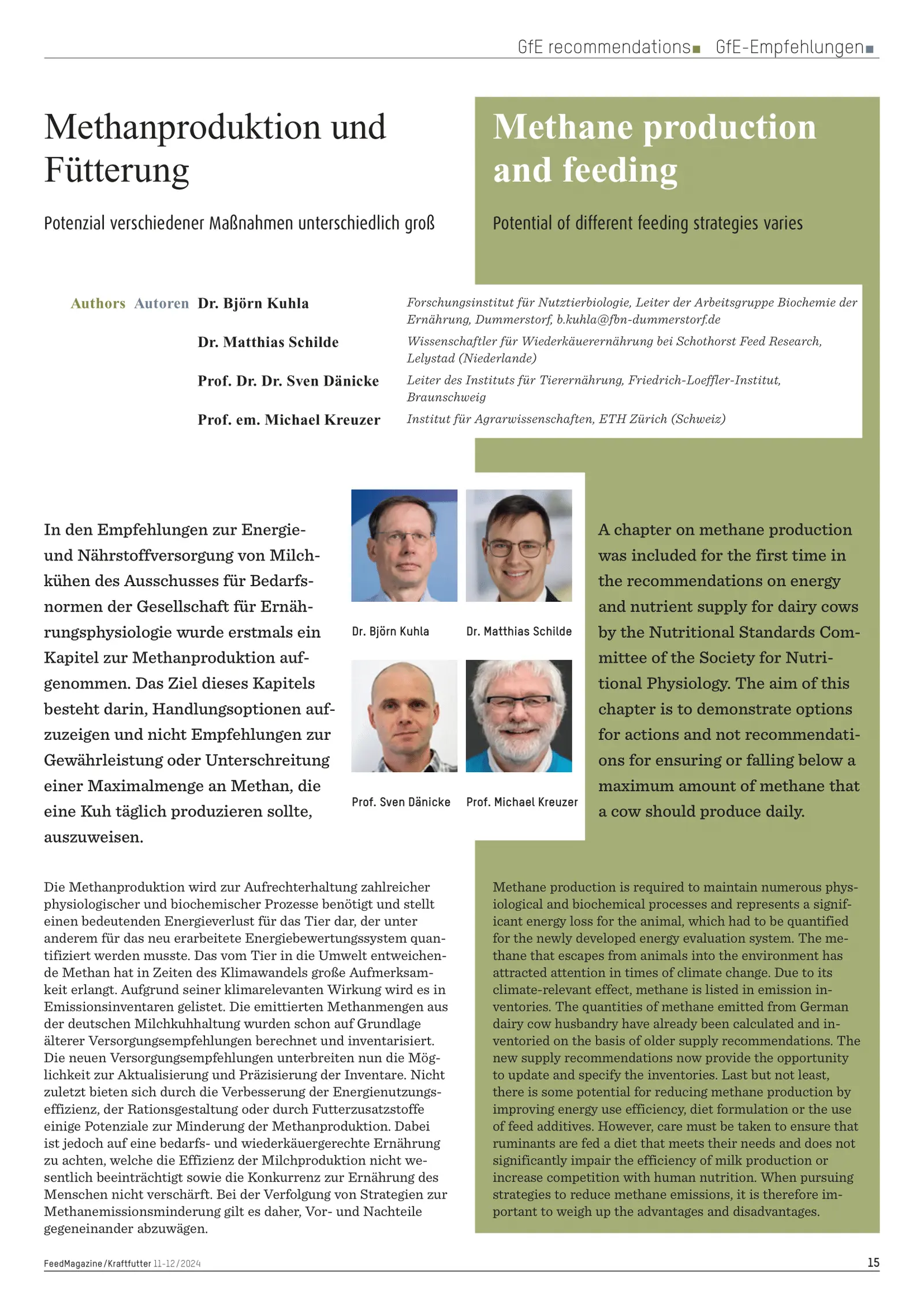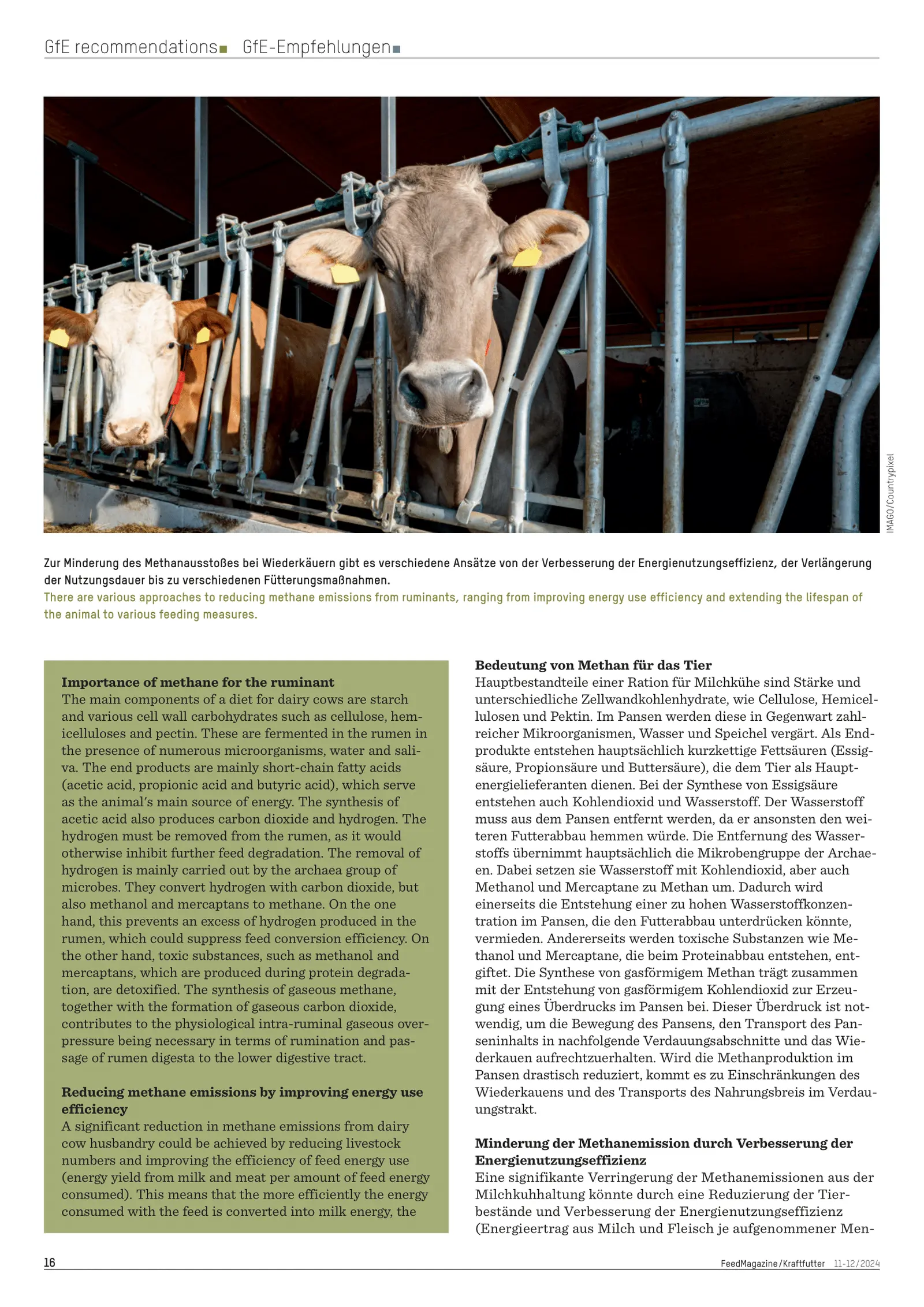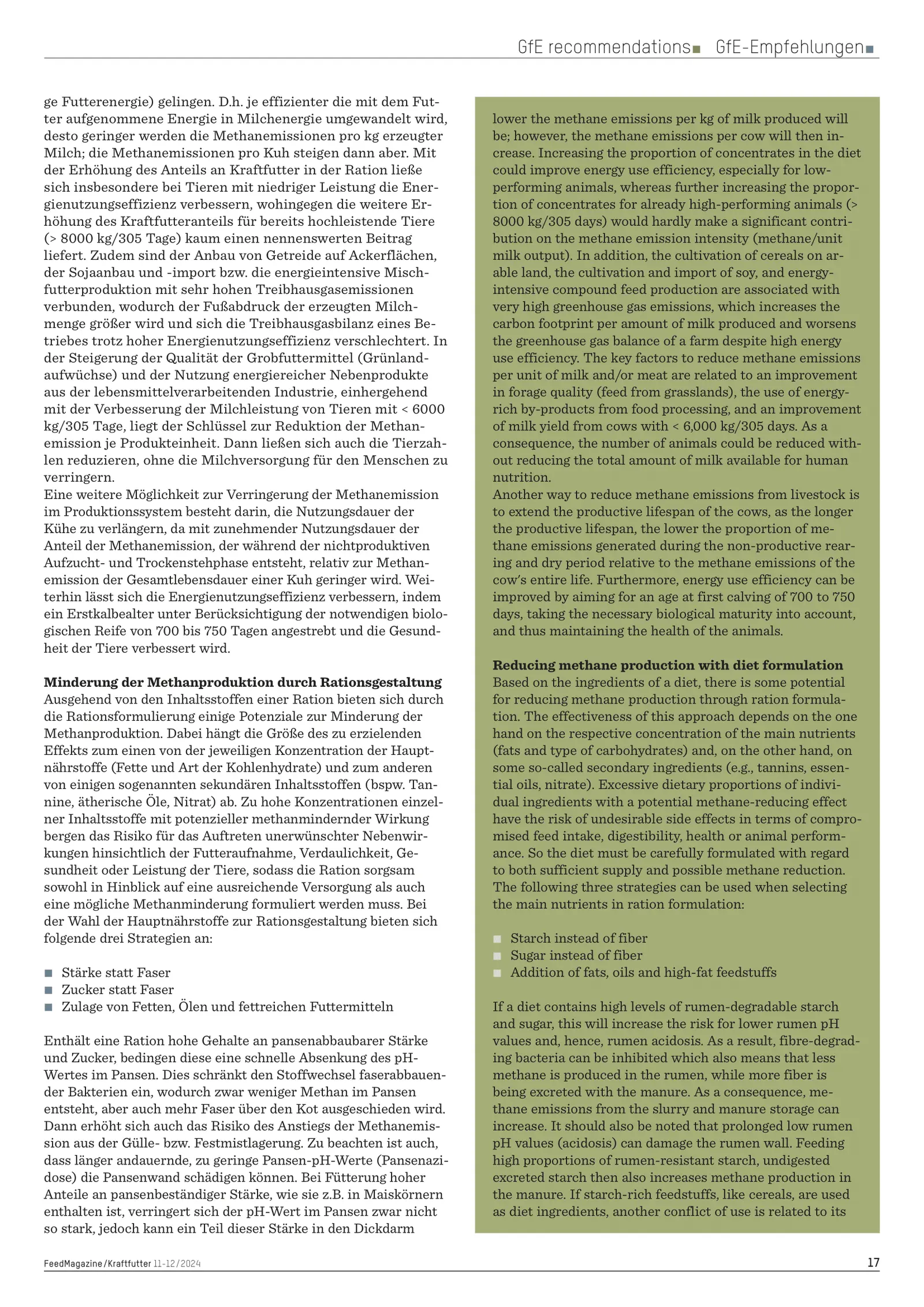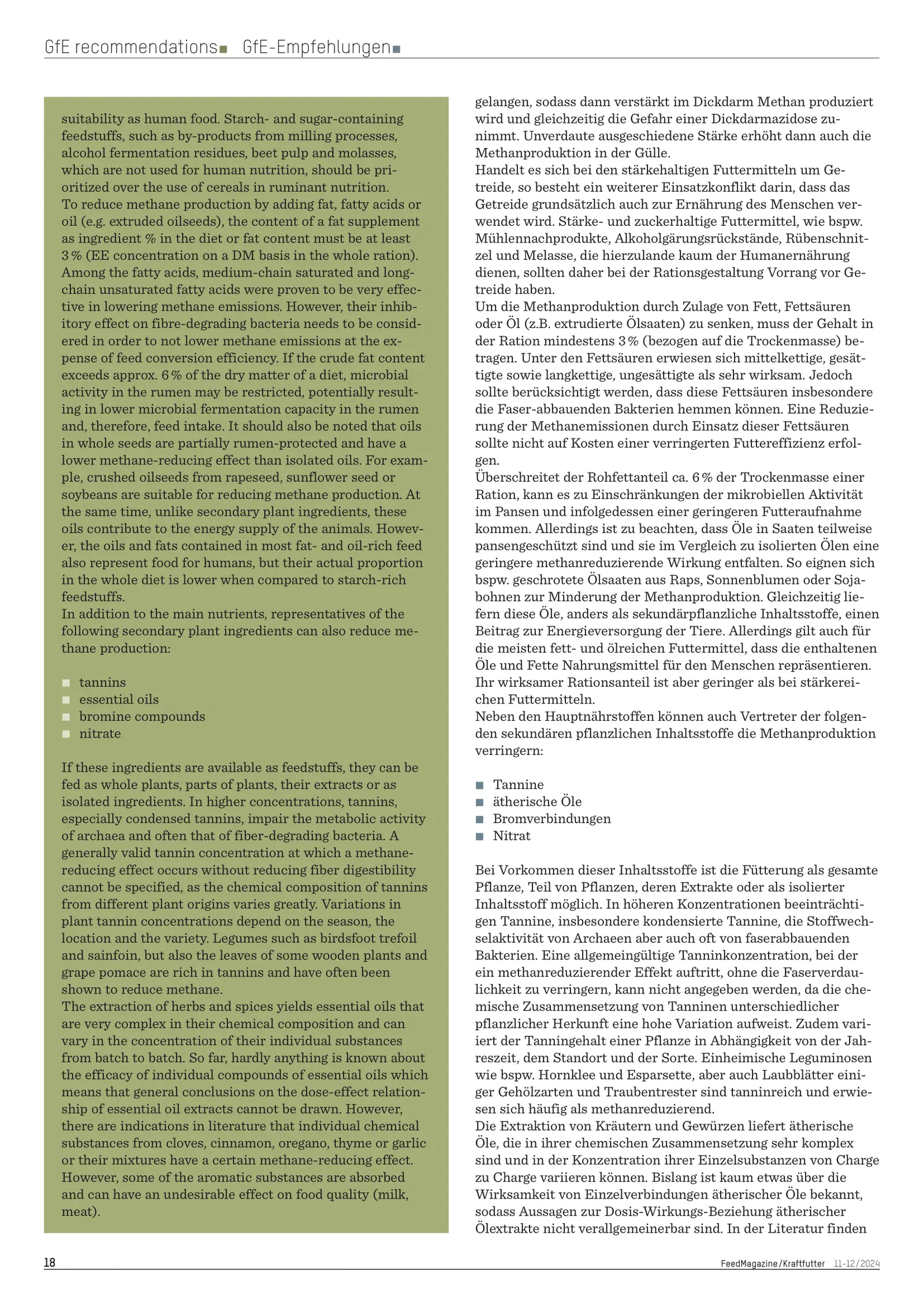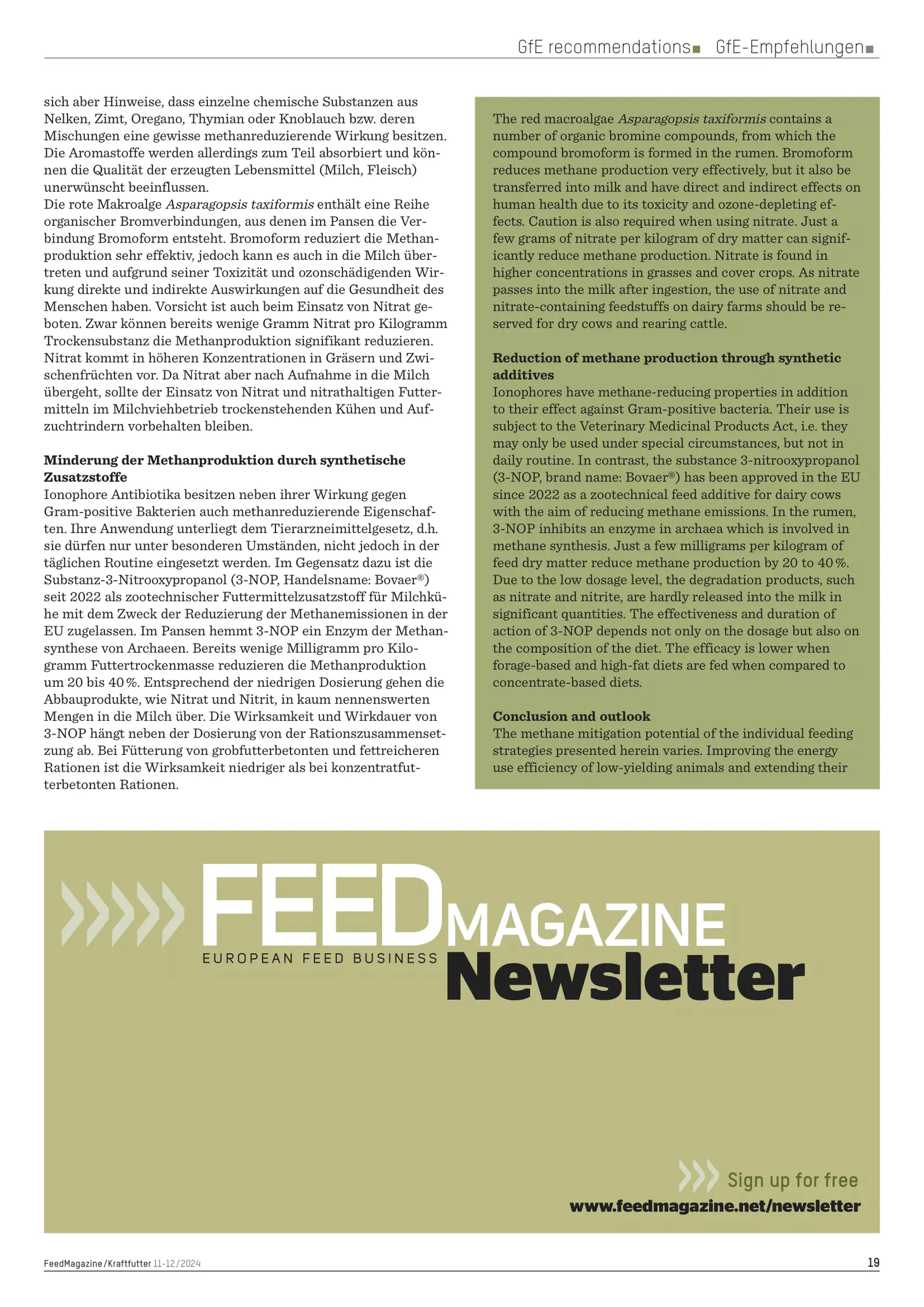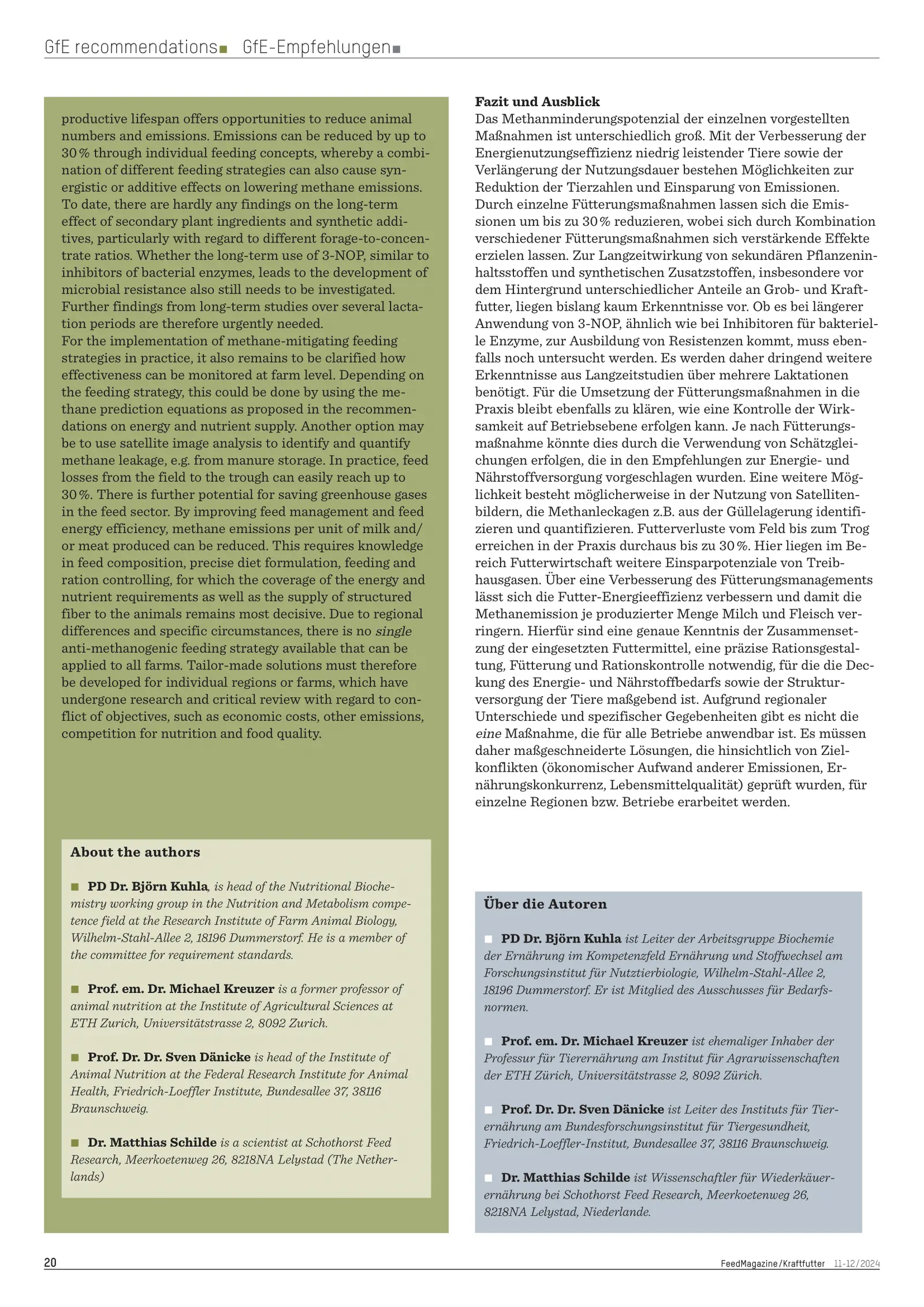Potential of different feeding strategies varies
Source: FeedMagazine/Kraftfutter 11-12/2024
Authors: Dr. Björn Kuhla, Dr. Matthias Schilde, Prof. Dr. Dr. Sven Dänicke, Prof. em. Michael Kreuzer
For the first time, methane production has been included in the recommendations on energy and nutrient supply for dairy cows by Society of Nutrition Physiology (GfE). Methane plays an essential physiological role in the rumen, aiding in hydrogen removal and detoxification processes, but also represents a major energy loss and contributes significantly to greenhouse gas emissions. The new recommendations enable updated emission inventories and explore strategies for reducing methane production.
Methane Production in the Rumen
Methane is primarily produced by archaea in the rumen through the conversion of hydrogen and carbon dioxide, as well as methanol and mercaptans. This supports ruminal fermentation and digestion, but also leads to substantial energy loss.
Strategies to Reduce Methane Emissions
Conclusion and Outlook
Feeding strategies can reduce methane emissions by up to 30%, particularly through combined approaches. However, the long-term effects of secondary plant ingredients and 3-NOP need further research. Practical implementation requires reliable farm-level monitoring, for example using methane prediction equations or satellite imagery. Feed losses and inefficient feed management also represent areas for improvement. Ultimately, no universal feeding solution exists; tailored strategies considering regional conditions, economic trade-offs, and food competition must be developed and evaluated.
The New Regulations for Dairy Cow Feeding in HYBRIMIN Futter X
The latest GfE recommendations are integrated into HYBRIMIN Futter X. Contact our support team for more information.
 Croatian
Croatian Danish
Danish French
French German
German Greek
Greek Polish
Polish Portuguese
Portuguese Romanian
Romanian Russian
Russian Spanish
Spanish Turkish
Turkish